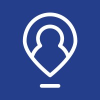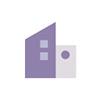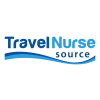As an MRI Technologist , you are responsible for patient safety and the performance of high-quality MR studies, on site and / or remote.
Ensures effective communication with Radiologist, team members, patients, and customers for those who work in the mobile environment.
When required, trains, and orients new technologists, Patient Coordinators and / or MR Technologist Assistants.
Specific duties include, but are not limited to :
Responsible for Patient Safety, including pre-screening for contra-indications, aseptic injection technique and may require remote MR Technologists Assistant oversite.
Produces high quality diagnostic images. Operation of multiple MR systems may be required.
Demonstrates the ability to use all channels of communications to address concerns, solve problems, and address conflict.
Effectively communicates with customers and / or radiologists.
Trains and orients new technologists, patient coordinators and MR Technologist Assistants, on site and / or remote.
Other duties as assigned.
Position Requirements :
High School Diploma or equivalent experience
Registered Technologist by the ARRT, NMTCB or ARMDS
MR registered technologist R.T. (MR) ARRT or ARMRIT
Technologist registered in other modalities
State license
CPR Certification
Technologists performing mid-day moves
The COVID-19 vaccination is / may be a condition of employment.
All candidates who accept an offer for employment will be required to successfully complete a pre-employment background check and drug screen as a condition of employment.
Local travel may be required.
Preferred :
Associate’s Degree or equivalent experience
1 year of Magnetic Resonance Imaging Experience
Registry in Magnetic Resonance by the ARRT
Physical Requirements :
The employee may be exposed to outside weather conditions during transport of patients if working on a mobile unit. The employee will be exposed to a strong magnetic field.
May be exposed to blood / body fluids and infectious disease, communicable disease when interacting with patients, environmental hazards such as exposure to noise, and travel.
More than 50% of the time :
Sit, stand, walk.
Repetitive movement of hands, arms and legs.
See, speak and hear to be able to communicate with patients.
Less than 50% of the time :
Stoop, kneel or crawl.
Climb and balance.
Carry and lift (ability to move non-ambulatory patients from a sitting or lying position for transfer or to exam).









